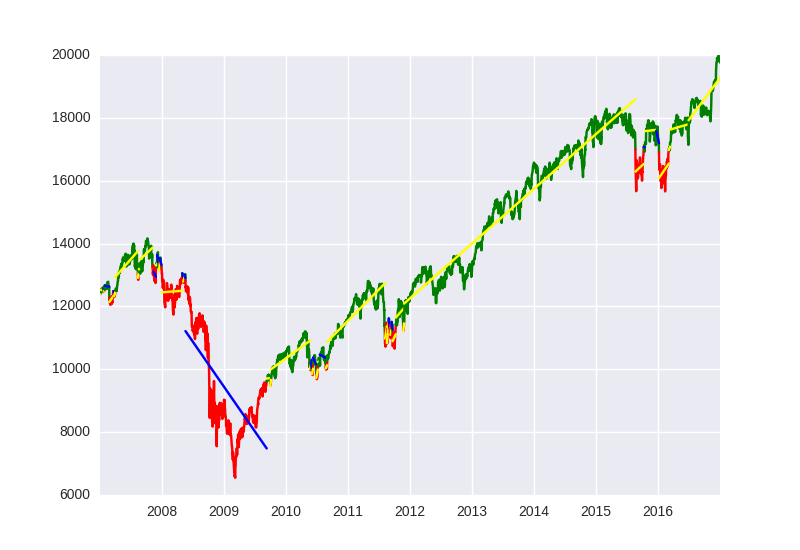Fitting a linear trend to a set of data is straight forward. But how can I fit multiple trend lines to one time series? I define up and down trends as prices above or below a exponential moving average. When the price is above the EMA I need to fit a positive trend and when the trend turns negative a new negative trend line and so forth. In my code below the market_data['Signal'] in my pandas dataframe tells me if the trend is up +1 or down -1.
I'm guessing I need some kind of a loop, but I cannot work out the logic...
import pandas as pd
import pandas_datareader.data as web
import datetime as dt
import numpy as np
import matplotlib.pyplot as plt
import matplotlib.patches as mpatches
import matplotlib.dates as mdates
#Colecting data
market = '^DJI'
end = dt.datetime(2016, 12, 31)
start = dt.date(end.year-10, end.month, end.day)
market_data = web.DataReader(market, 'yahoo', start, end)
#Calculating EMA and difference
market_data['ema'] = market_data['Close'].ewm(200).mean()
market_data['diff_pc'] = (market_data['Close'] / market_data['ema']) - 1
#Defining bull/bear signal
TH = 0
market_data['Signal'] = np.where(market_data['diff_pc'] > TH, 1, 0)
market_data['Signal'] = np.where(market_data['diff_pc'] < -TH, -1, market_data['Signal'])
To fit the trend lines I wan to use numpy polyfit
x = np.array(mdates.date2num(market_data.index.to_pydatetime()))
fit = np.polyfit(x, market_data['Close'], 1)
Ideally I would like to only plot the trends where the signal last more than n periods.
The result should look something like this:



market_data['Signal'], is that correct? – Moreen